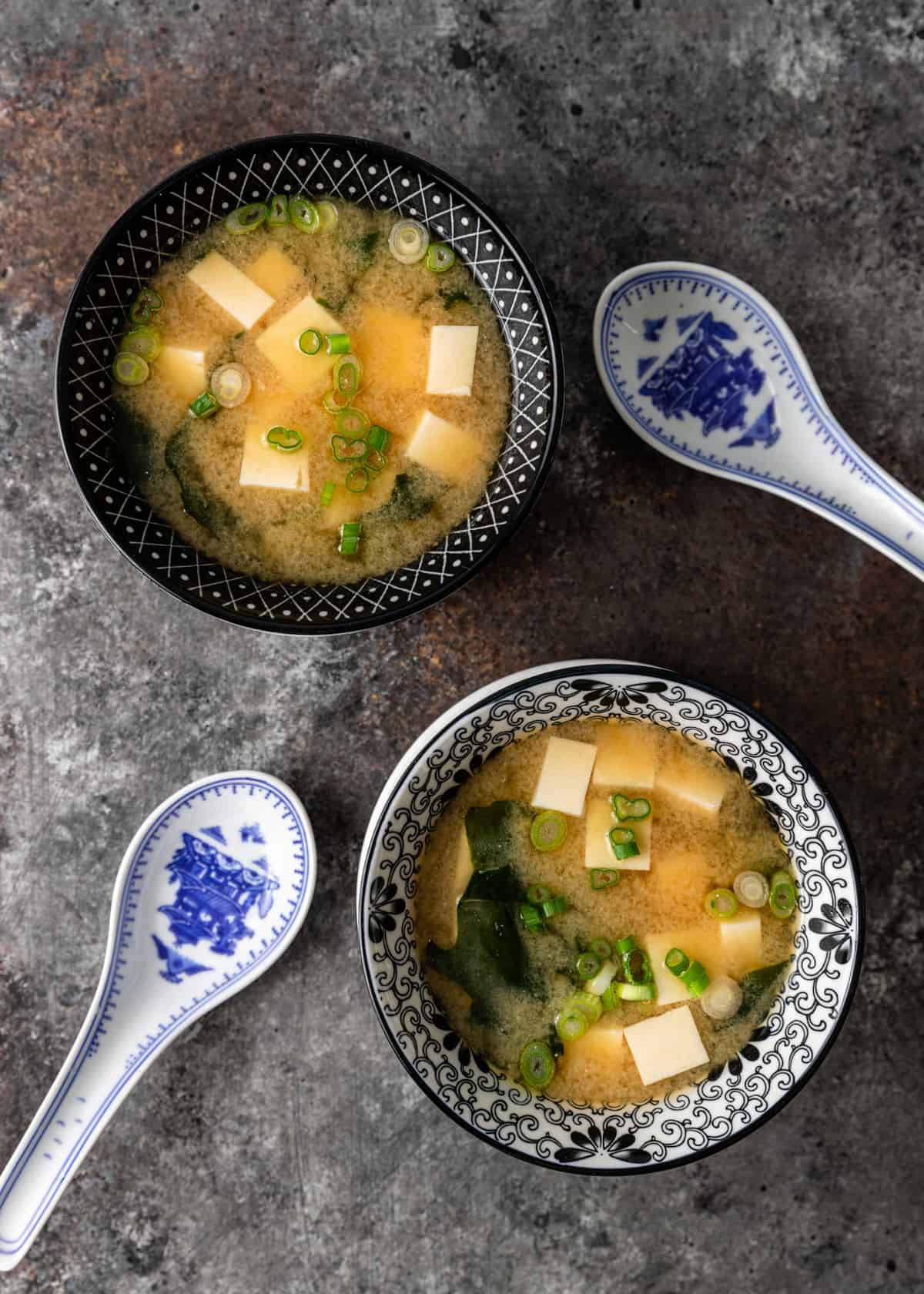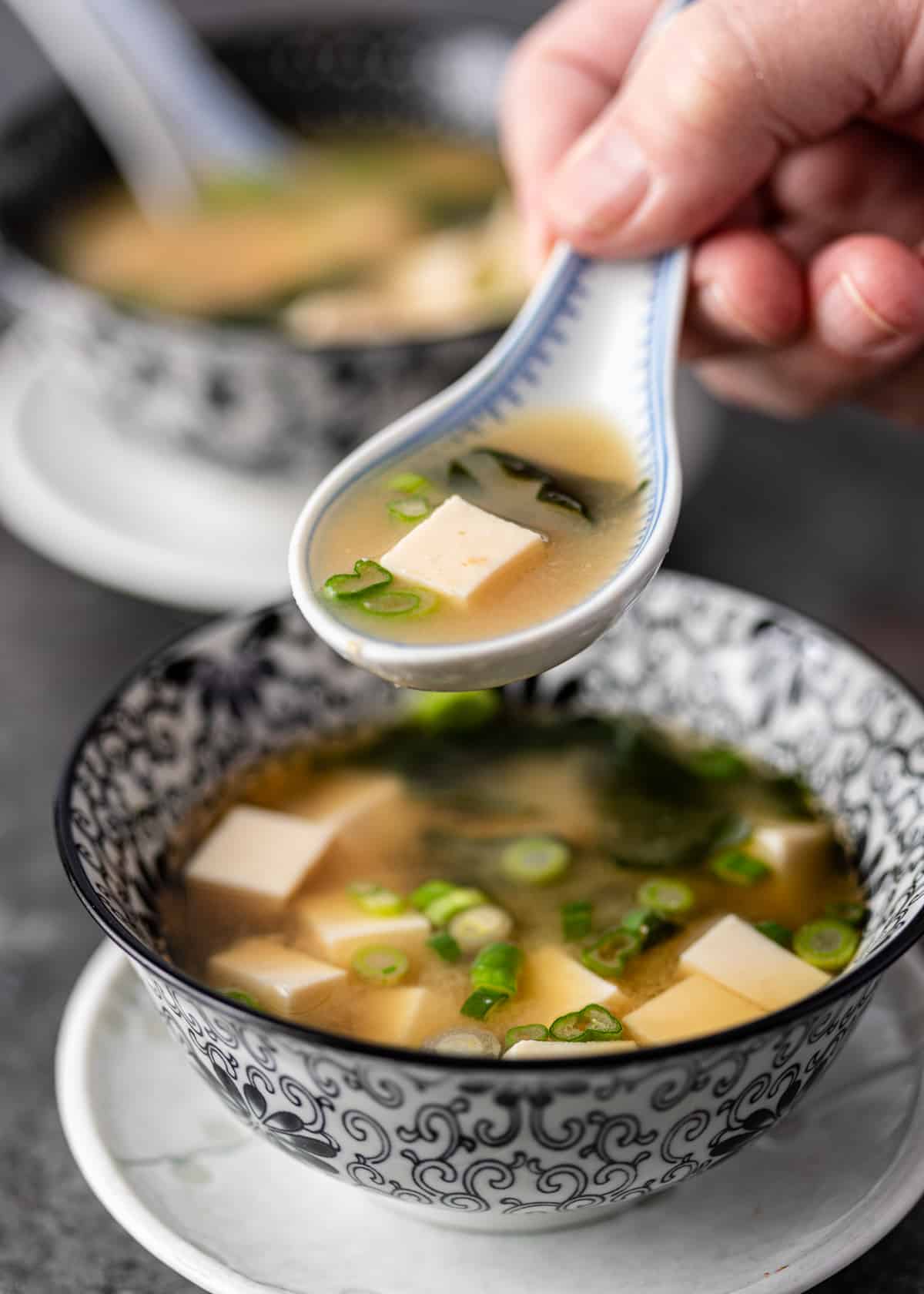published Mar 29, 2023 If you like sushi as much as I do, you’ve likely already tried miso soup! Most Japanese restaurants serve it as an appetizer before they bring out your rolls. I find that my homemade version is a bit more substantial than what you find in a restaurant. That means you can enjoy it for lunch or as a light weeknight dinner. I’ve never met a soup I didn’t like. I’ve got plenty to choose from here on the blog — Egg Drop Soup, Lebanese Lentil Soup recipe, Greek Chicken Orzo Soup, and Mulligatawny Soup made with spices, coconut milk, and vegetables are some of my go-to’s! You may have to do a bit of hunting to find the ingredients for my miso soup recipe, but I promise it’s worth it! Check out the international aisle at your local grocery store, or if you know of an Asian market, head there. If all else fails, the internet is your friend. Like I said…it’s definitely worth the effort!
INGREDIENT NOTES AND SUBSTITUTIONS
Dried Kelp – Kombu in Japanese, you’ll use dried kelp to create your “dashi,” a type of Japanese soup stock.Dried Bonito Flakes – Bonito is a variety of tuna. Another Japanese ingredient, dried bonito flakes are also called katsuobushi. Water – The base for your dashi!Soft Tofu – Most of the sustenance of my miso soup recipe comes from the tofu! It’s an excellent source of plant-based protein. Make sure to use soft, not firm.Miso Paste – Here’s where all of that delicious salty umami flavor comes from! I recommend using 1 tablespoon of miso paste for every 1 cup of dashi.Dried Wakame Seaweed – Wakame is a type of seaweed. It adds even more umami flavor and boasts just a touch of sweetness.Green Onion – For added color and savory flavor.
HOW TO MAKE MISO SOUP
- Start the Dashi. Cut or break up the kombu into several pieces and add it to a saucepan with the water over medium heat. Make sure to use a pot that’s big enough! Bring the mixture to almost a boil — turn off the heat when you start to see bubbles. Skim any foam or residue as you go along.
- Add the Dried Bonito Flakes. Remove the kombu with tongs and set aside for another use or discard. Add the dried bonito flakes and bring the mixture to a boil. Once it does, remove the saucepan from the heat and allow the katsuobushi to steep for 10 minutes.
- Strain the Dashi. Place a fine mesh sieve over a measuring bowl and strain the dashi. Make sure to press the wet bonito flakes to extract as much liquid as you can. You can then discard it or save it for something else.
- Prep the Onion & Tofu. Slice the green onion into thin slices and set them aside. Cut the soft tofu into ½-inch cubes and set them aside as well.
- Add the Miso Paste. Transfer your dashi back into the saucepan and bring to a simmer. Place the miso paste into a ladle with a bit of warm dashi and stir to dissolve. Add it to the saucepan and stir.
- Assemble Your Miso Soup. Incorporate the tofu and dried wakame seaweed. Bring to a simmer, being careful not to let it start boiling. Ladle your soup into bowls and top with the green onion. Serve it while it’s hot and enjoy!
What is Miso Soup Usually Made Of?
Traditional Japanese miso soup is made with a combination of dashi and miso paste — just like my recipe! Some chefs leave it as is, but I like to add in soft tofu as well as dried wakame seaweed. You could also add some extra veggies like mushrooms, carrots, or spinach if desired!
What Are the Two Main Ingredients in Miso Paste?
Miso paste is made from fermented soybeans. The fermenting process involves imbibing soybeans with a mold called “koji” that comes from rice, barley, or soybeans themselves. It takes weeks (if not longer) to create, and if the word mold gives you the heeby jeebies, don’t worry. It’s perfectly safe to eat once it has been fermented!
Can I Just Add Miso Paste to Water to Make Soup?
If only it was that easy! I definitely recommend creating your homemade dashi before adding the miso paste. Otherwise, you’ll end up with a broth that lacks much in terms of flavor. Some folks do use this method to create a quick soup, but I have to say that my miso soup recipe is a lot more satisfying!











